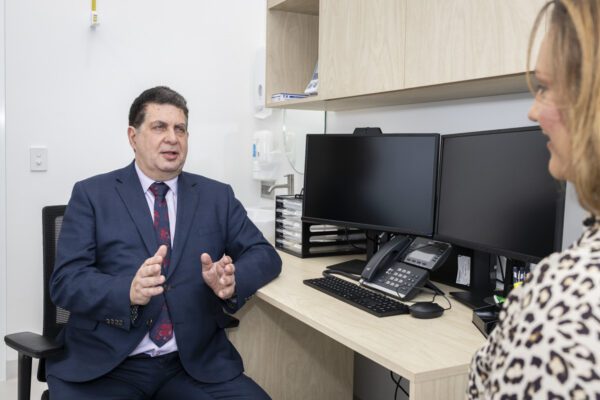According to Australasian Psychiatry, over 1.15 million Australians or around 4.4% of our population experience Post-Traumatic Stress Disorder (PTSD) each year, and that number is set to rise to rates higher than ever previously reported.
The groups of people in our community with the highest rates of PTSD – emergency workers (10%) and Defence Force personnel (8.3%) – were those called on in 2019 and 2020 to provide the bushfire response and assistance during COVID-19 quarantine and lockdowns.
While these rates are expected to increase within these careers, the percentage is also increasing among health care workers who were quarantined. These pandemic heroes are now suffering PTSD at higher rates than the general public, due to the impact of COVID-19.
Due to the traumatic events we are all seeing in our lifetime, the prevalence of PTSD in Australia will only increase.
“PTSD has long been associated with armed and emergency services, but we are finding that so many more everyday Australians are now dealing with the consequences of traumatic events, resulting in more and more PTSD,” says Dr Anja Kriegeskotten, The Banyans Health and Wellness Consultant Psychiatrist.

Added to this is Australia’s increase in mental illness in veterans, who currently suffer PTSD symptoms at rate of 17.7% in the four years after discharge.
Dr Kriegeskotten, who has a special interest in trauma, says the higher incidence of PTSD within the community means there is a critical need for greater public awareness and knowledge of the condition.
Related: Myths about PTSD
How to know what PTSD is
Post-traumatic stress disorder (PTSD) is a mental health condition marked by the development of a particular set of stress symptoms following a traumatic event, or multiple traumatic events, in which that person’s life or safety, or that of others around them, was in danger or under threat.
PTSD can also follow repeated and extreme exposure to traumatic events or the exposure to the aftermath of those events.
“Any of this could be a car or other serious accident, physical or sexual assault, war or torture, or disasters such as bushfires or floods. As a result, the person experiences feelings of intense fear, helplessness, or horror,” says Dr Kriegeskotten.

PTSD symptoms and signs
Although experiencing PTSD is different for everyone, some people have noted they experience feeling pain or pressure in their body, even if there’s nothing physically there. Experiencing PTSD can also include experiencing the same emotions felt during the traumatic event, such as fear, horror, or distress. Panic attacks, nightmares, increased heart rate, and difficulty breathing also can indicate PTSD.

What are the five stages of PTSD?
1. Impact or Emergency Stage
This is the stage directly following the traumatic event when the individual is struggling to deal with what they have seen or been involved with.
2. Denial/ Numbing Stage
Not everyone who experiences PTSD experiences the denial or numbing stage. In this stage, people suffering from PTSD will do their best to protect or numb themselves through denial that the event occurred.
Avoiding difficult emotions through denial is the mind’s way of ensuring it isn’t hurt any further by eliminating the high stress and anxiety that it is feeling.
People suffering PTSD symptoms need to deal with this stage to enable their mind to move forward. Compassionate, professional treatment can help to address this stage.
3. Rescue Stage (including Intrusive or Repetitive stage)
In the rescue phase, the affected individual begins to come to terms with what has happened to them. This stage can include returning to the site of the trauma, including returning to a home following a bushfire or natural disaster. It involves acknowledging what has happened but also includes continuing to deal with the initial shock and distress.
PTSD sufferers may find they continue to experience nightmares and flashbacks and are increasingly anxious and jumpy, despite the belief that they have dealt with the trauma.
Denial, confusion, despair, and hopelessness are a range of difficult emotions that can be felt at this stage of PTSD.
This can often be the most destructive of stages, but also when the person living with PTSD may finally be willing to wholly confront the trauma that is controlling his or her life and also impacting the lives of others.
4. Short-term Recovery or Intermediate Stage
During this stage, the individual with PTSD begins to enter recovery and is starting to adjust to returning to a ‘normal’ life, after fulfilling his or her basic safety and survival needs. At this stage, people can be humbled by the outpouring of love and support for them, or alternatively, disappointed in the lack of care and concern shown to them by others.
This short-term recovery includes transitioning to a new level of acceptance and understanding of the trauma and how it affects their lives. Healing can start to occur, and many people start to enjoy a more positive outlook, including a plan or steps toward a sustainable PTSD recovery.
The effects experienced in the Rescue stage often continue through this period, and some people may experience physical symptoms such as fatigue and/or sleep disturbances, as well as stress reactions like irritability.
5. Long-term reconstruction or recovery stage
When a person living with PTSD begins to work through and implement a recovery program, he or she has entered the reconstruction fifth stage. This is also known as the Integration Stage.
Coping mechanisms are created and learnt to address symptoms, and these new skills are integrated into daily life and enable people to look forward in their lives, but some may become concerned about their futures, presenting as fear and depression.
The journey of the fifth stage may be a long one, and most people find they regress when suffering from a current stressful situation, including triggering events. Implementation of the coping strategies and skills learnt through a PTSD recovery program are consistently important at this stage for the person to continue to deal with their life.

Related: Trauma – what is it and how to help?
How long does PTSD last?
The course of the illness will vary from person to person and event to event. Some people may experience PTSD recovery within six months, while others have PTSD symptoms that last much longer. PTSD can also become chronic.
As with most mental illnesses, PTSD is intensely personal and no two cases are the same.
“The length of time a person can experience post-traumatic stress disorder (PTSD) varies,” says Dr Kriegeskotten.
“When PTSD is not treated, it can last a very long time, perhaps a lifetime. For others, the PTSD symptoms can fade over time, but increase again on an anniversary or at a triggering time in their life.”
How long after trauma does PTSD start?
The first PTSD symptoms can begin within weeks of a traumatic event and need to continue for up to three months or longer to be considered PTSD.
“It is important after a traumatic event to get whatever help you need. This can be talking to friends and family or accessing information and resources and professional help that help you feel you can continue with your life,” says Dr Kriegeskotten.

PTSD treatment with The Banyans
A private inpatient Residential Program or outpatient Day Program at The Banyans Health and Wellness offers an individually tailored approach to PTSD treatment and recovery. Each therapy inclusion is research-based and has been shown to positively impact the mental and emotional health of PTSD survivors.
Programs at The Banyans equip people with practical tools and strategies for moving forward. Offering psychiatry, psychology, EMDR therapy, EAGALA equine-assisted therapy, music therapy, relationship counselling and more, The Banyans Health and Wellness is Australia’s premium residential program for PTSD treatment.
For further support and information about a PTSD treatment program at The Banyans, submit a contact form below or call our team on 1300 226 926.
Disclaimer: The information provided in this blog is for general informational purposes only and is not intended as a substitute for professional medical advice, diagnosis, or treatment.





